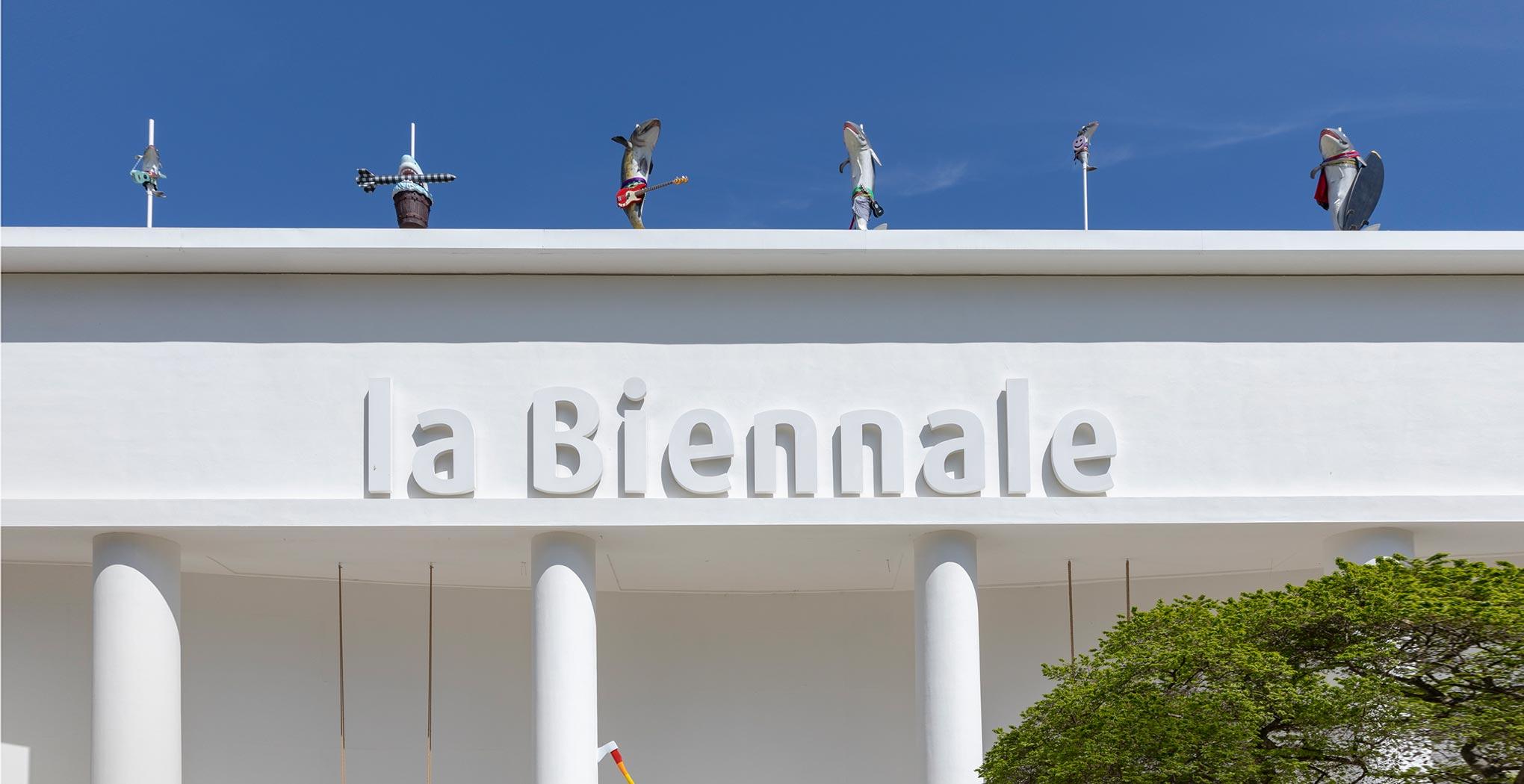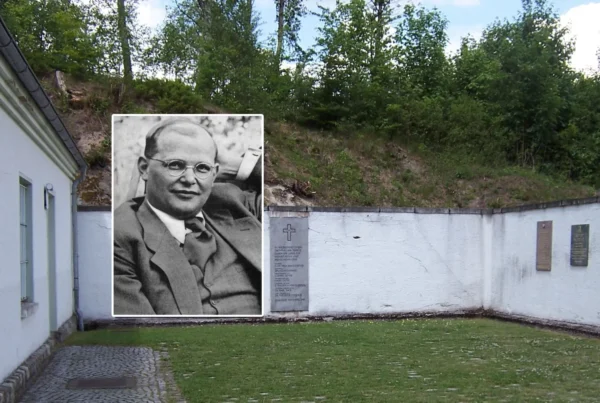Hellmut Brunn shares his impressions of the 59th Biennale in Venice:’The Milk of Dreams’. The world reknown art exhibition will be on display until 27 November. This biennial event attracts a huge crowd, the press and much social media attention. Women are at the center of the event: the majority of artists and the director are female or non-binary. The 59th Biennale has many interesting installations and artworks which reflect the contemporary political climate and modern western aesthetics. The Russian pavillion is notably empty, as are the pavillions of most Islamic countries.
Hellmut Brunn, 17 November 2022
Arriving in Venetian style by Vaporetto, the nostalgic Venice public transport boat, at the “Giardini” (garden compound at the eastern tip of the main island), the exhibition halls – which were built around 1900 by the old European great powers (France, England, Germany and Russia) – stand proudly at the beginning of the compound. Mirroring the contemporary status quo, the rather large Russia building is closed.
With a change of the Biennale slogan to “Dreams Have No Titles”, France emphasizes its specificity. On a small semi-circular porch, the relationship with Algeria is depicted in relation to contemporary and popular France, inside the pavilion. Typical cinematic objects are grouped around a veritable bistro in the center, together with a library, paintings and writings and a bed, probably in reference to French novelist Proust.
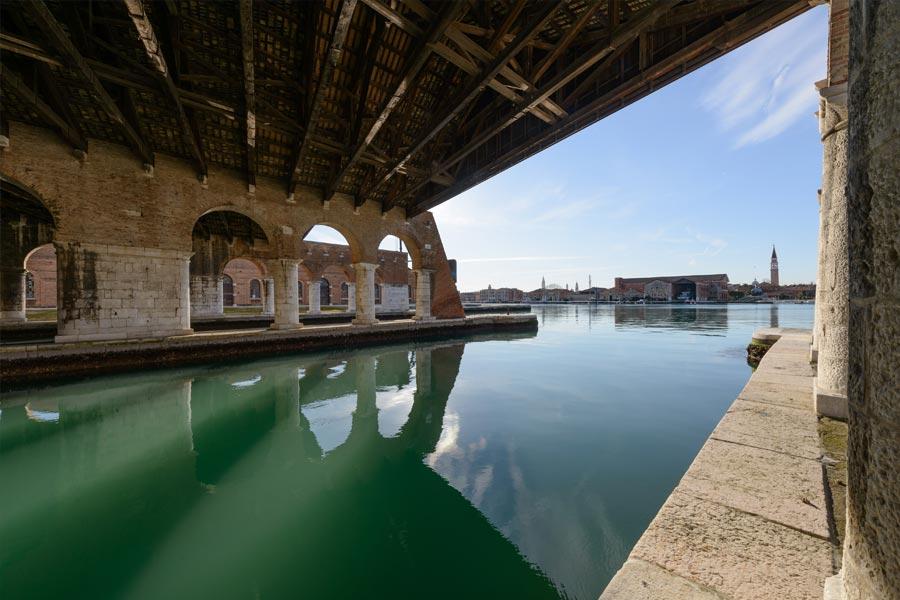
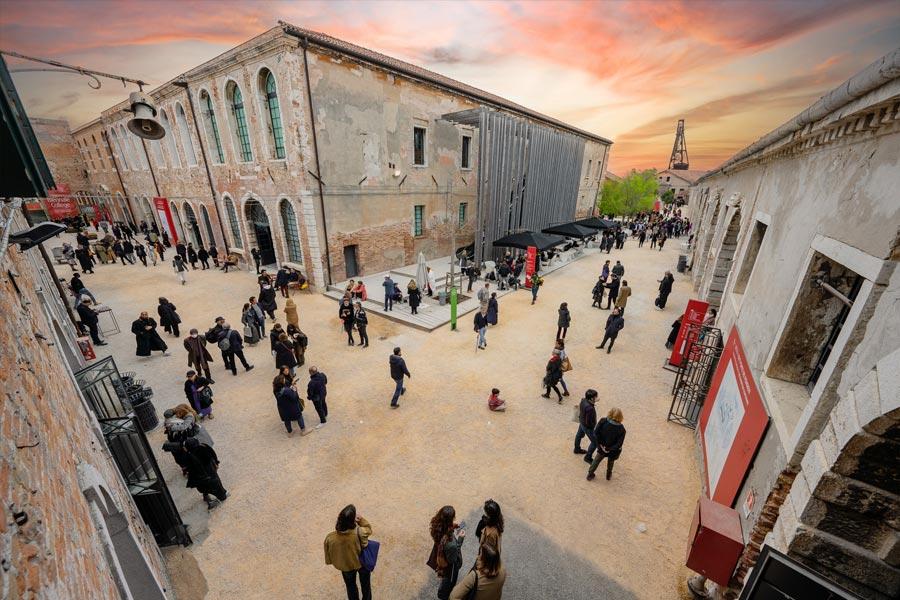
Impressions © Andrea Avezzù
Great Britain takes the easy route with an exclusive concentration on its current music scene; without any commentary, the most important black singers are being displayed on monitors.
I had been eagerly awaiting the German contribution. The featured cultural section was generally judged somewhat critically, but Maria Eichhorn, who was commissioned to design the pavilion, dealt intensively with the building representing a reconstruction of 1938 Germany. Eichhorn’s idea of tearing down this old building in favor of a current new building remained an idea. Instead, she questions the “foundation” of our successful democracy: in the center, she had the floor ripped open with a view into the original basement foundation, which looks like an open wound.
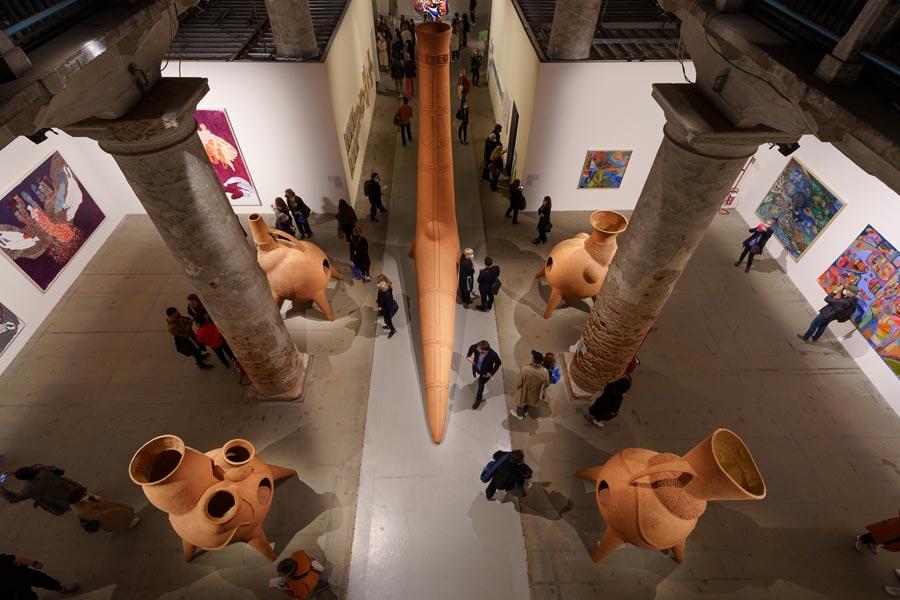
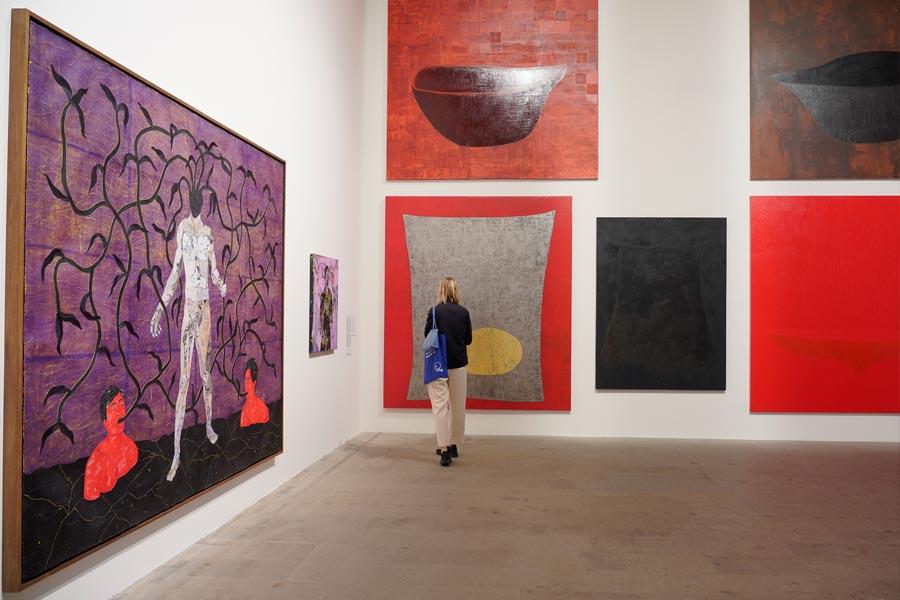
Exhibition rooms © Andrea Avezzù
The fates of numerous Italians who rebelled against the coercive measures of the German fascist rulers during these pre-war years are also remembered. For example, Eduardo with the “beautiful” surname “Melloni” used his function as a railroad boss to help numerous people who had fled to Venice to bypass the railroad station bottleneck back then, when the train station was so “popular” with the Gestapo during the war…. traces of Eduardo were lost in Dachau.
The pavilion of the USA remains the most impressive for me. The African-American artist Simone Leigh uses the freedom granted to her when designing the pavilion to reinterpret the slogan “Black Lives Matter” by warping the building itself into a form reminiscent of a dwelling that is traditional in Africa, i.e., a thatched roof supported by numerous timbers.
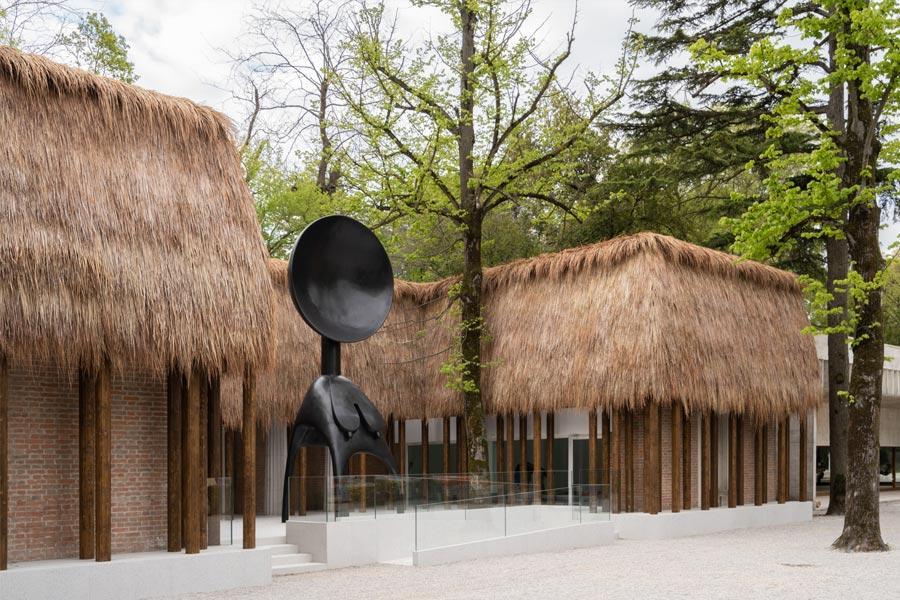
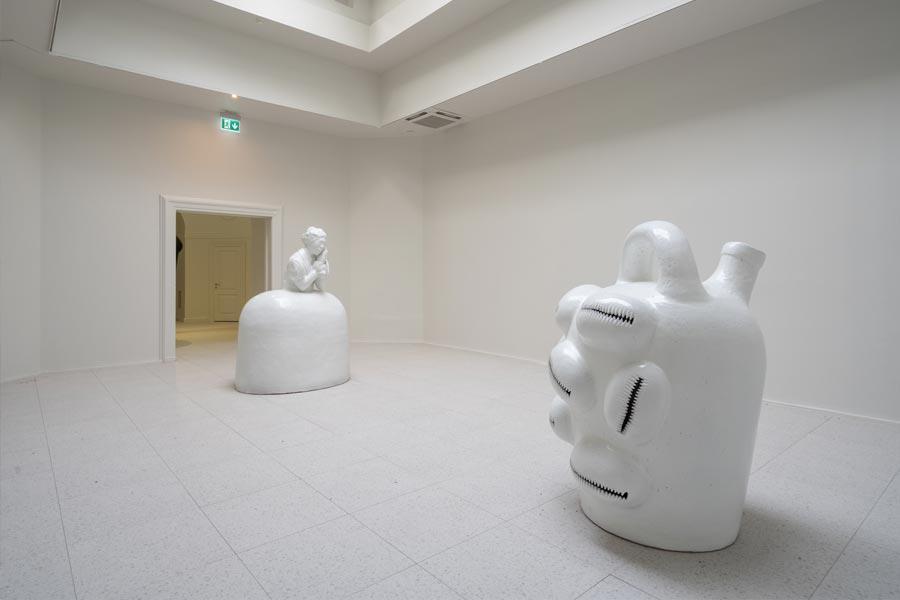
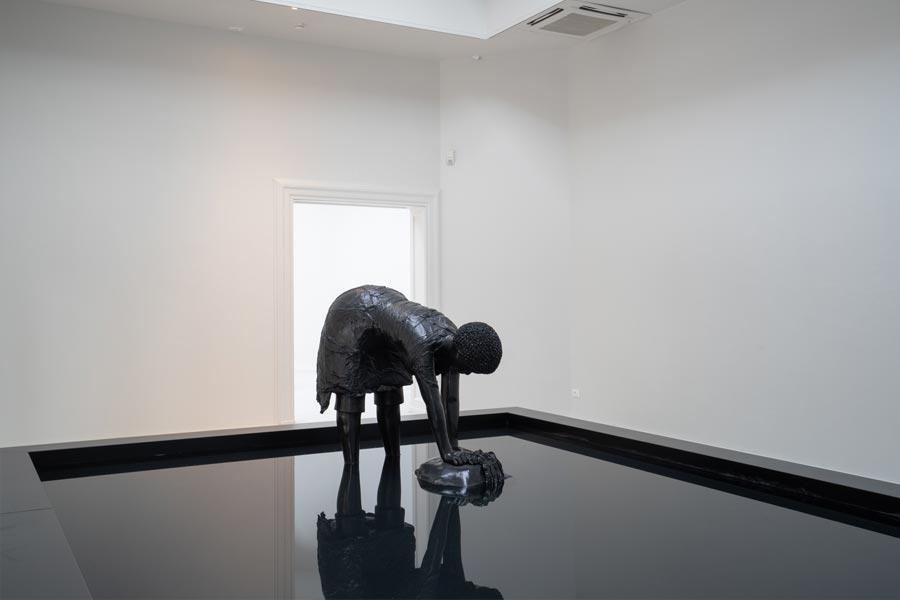
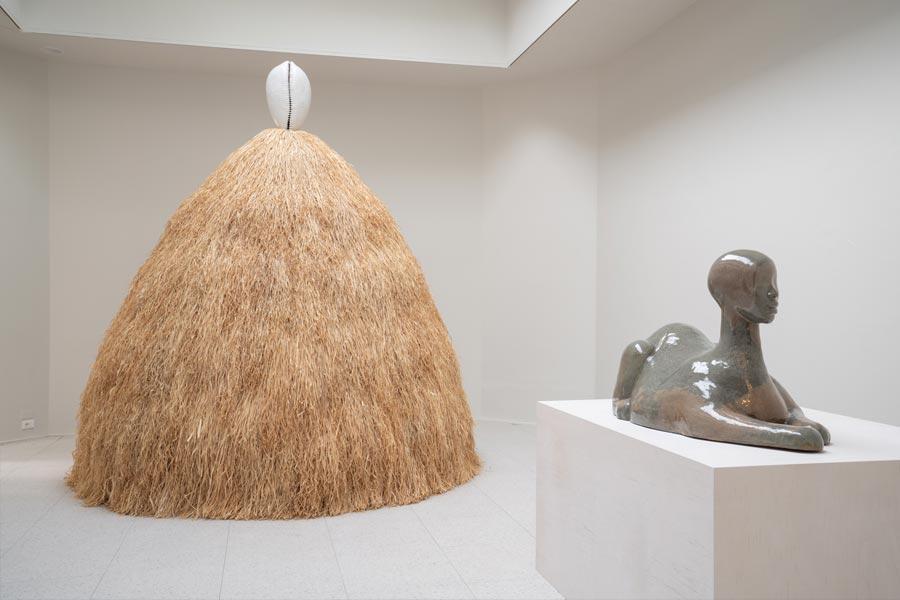
Four pictures of the pavilon of the USA © Marco Cappelletti
How beautiful, how close to nature, especially when compared to most of our concrete buildings that have become so common. In the center, a huge abstract sculpture of a self-confident woman, whose pendulous breasts fit within the ensemble. Inside there are only female sculptures, all in a very pleasant dark blue. In the first room, there is a kneeling black woman in a water fountain washing clothes. In the central room we find a picture-perfect life-size woman comparable to Marylin Monroe, complemented in the last room by another sculpture of a beautiful woman with somewhat exaggerated breasts.
Other parts of the Biennale, for which one should plan a whole day (it is open until 27 November 2022), are the exhibitions in the main building, divided into numerous rooms. Very thought-provoking is the life-size depiction by Katharine Fritsch of an elephant in a hall of mirrors right at the entrance.
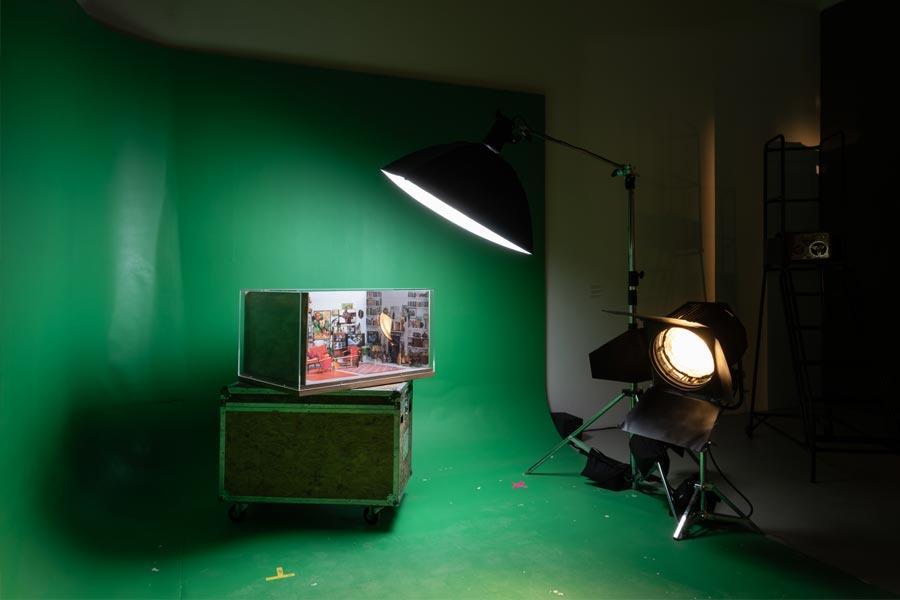
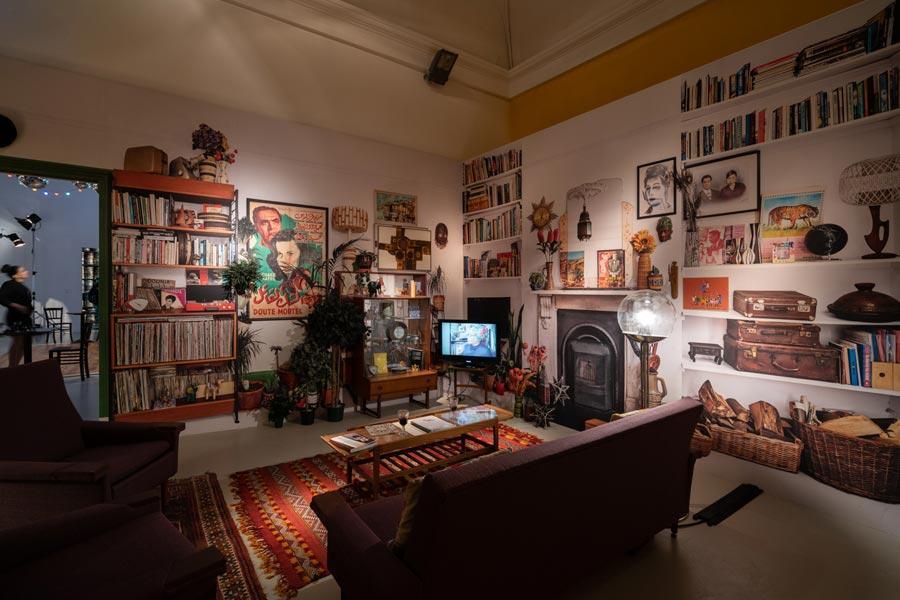
Two pictures of the pavilon of the France © Marco Cappelletti
By choosing Cecilia Alemani as director, around 90 percent of the exhibited works of art were done by women and non-binary artists. In the current exhibition the female artists’ confrontation with their gender is consciously depicted.
Conspicuous by their absence are most Islamic countries. Saudi Arabia takes advantage of their space with an exclusive forty-meter-long installation of dried palm branches known as “The Teaching Tree” by Saudi artist Muhannad Shono without any further comment. On the other hand, there is a pleasant experience of how even small countries such as Lithuania have used the space available to them (their installation consists of numerous small sculptures) or Malta (showing Caravaggio’s Beheading of John confronted with drops of molten steel), which equipped their respective spaces with interesting, thought-provoking works of art.
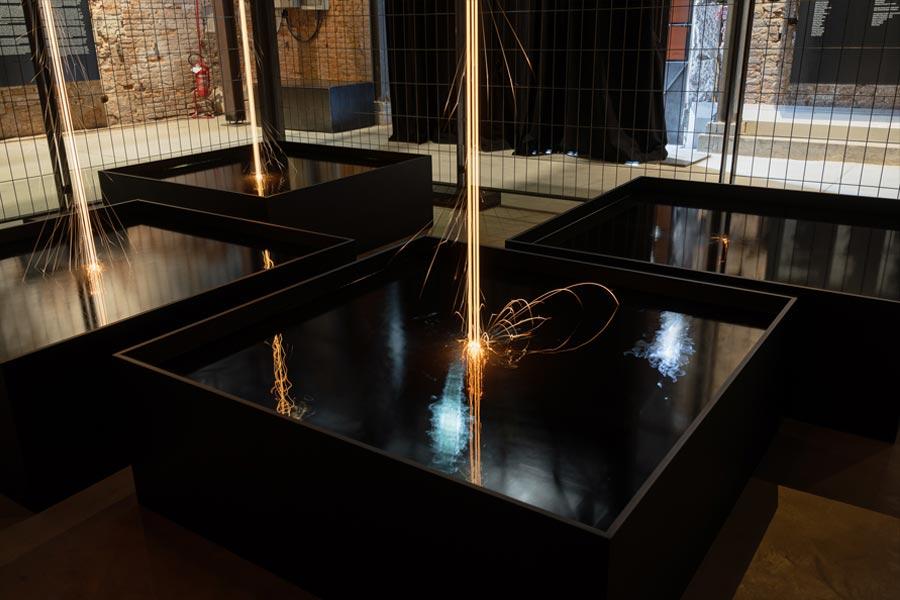

Impressions © Andrea Avezzù
The premises of the “ARSENALE” – which features a total 213 artists from 80 countries – is historically important not only for Venice. Even if one is thrilled by the present harmony of the entire complex with its diverse buildings, historically this site used to be a shipyard. Almost nobody knows about the historical importance of the ARSENALE, where the invention of assembly-line production was first recorded.
Contrary to popular lore, it was not the carmaker Henry Ford who invented this innovative and lucrative mode of production at the beginning of the 20th century. Instead, it was here in Venice at the Arsenale in the 16th century where the first assembly line was used. It was invented to produce an entire ship as quickly as possible to deal with the threat of the superior and huge Turkish fleet. Using this assembly line production, a ship could be produced in one day. The battle of Lepanto in 1571 was won especially with the help of these newly built ships, which ultimately contributed to saving Europe from Turkish domination.


